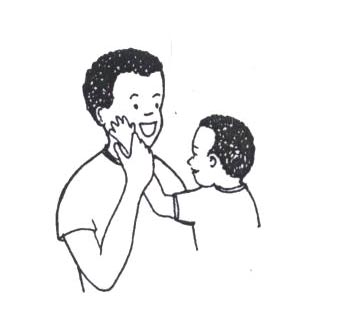
Touch your child on the arm or shoulder to let her know that you are going to interact with her then give your own 'signature' so that she knows who is doing the talking. These 'touch signatures' let your child know that a particular person is interacting with them. The clue used should always be a distinctive feature for that particular person so that the clue is always consistent.
For example:
Appa - moustache/beard/watch
Amma - ring/nose pin/earring /bindi/hair decoration (if it is always worn)
Akka - pigtail/ribbon/necklace
Tambi - hair/cheek
Pati - bindi/nose pin etc (but different from mother's signature)
Gently lift her arms and then pause before lifting her up.
Gently tap her bottom before cleaning her.
Stroke her face before wiping it with a cloth.
Giving these gentle touch clues will let her know what is going to happen next.
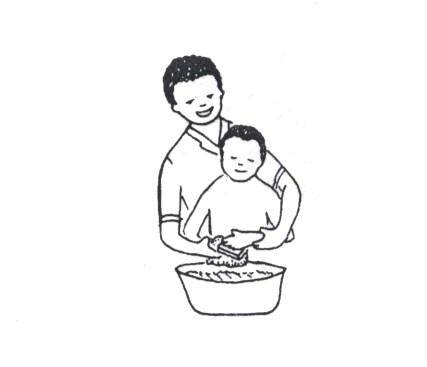
Hold your hands very gently under the palms of your child's hands and move along with your child's movements.Take great care when you are handling the hands of your child. Always use gentleness and sensitivity, and never handle them roughly or force her to touch.In this way the child will experience what the movement feels like and eventually she will learn to carry out the activity without your help.
Father :Now put the soap on the cloth.
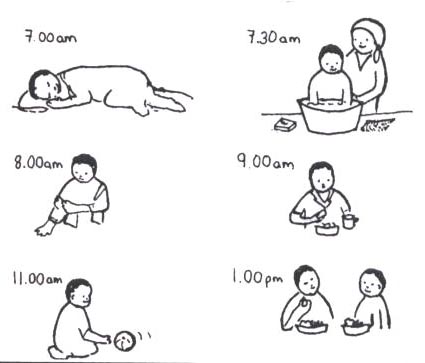
Keep to a set routine so that your child can begin to anticipate what will happen next. Knowing what is going to happen next will make your child feel more secure than when things happen randomly. For example:
Early morning routines - getting up > washed > dressed happens each morning in the same sequence and each activity is carried out in its own place each day
Meal times - same seating position each time > touch clue by helping your child to touch the feeding bowl or spoon. (Always let your child know when you are going to put food into her mouth by giving a touch clue such as touching her cheek or chin.)
Bed time - bath > into night-time clothes > special time > bed.
Try to end each day with some 'special time' where you and your child have some quiet time together, singing a song and moving in time to it, telling a story, playing with a toy.
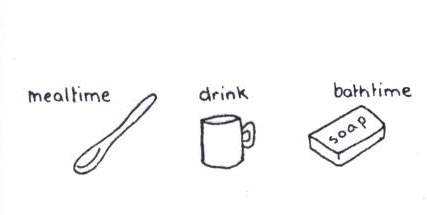
choose an object to act as a signal for each of the daily events that a child experiences,e.g. a spoon to signal a drink, soap to signal bathing. before you start the particular activity with your child you must let her feel the objects well . This will help her to understand what is about to happen to her. Eventually she will learn to anticipate the activity by the signal she is given.
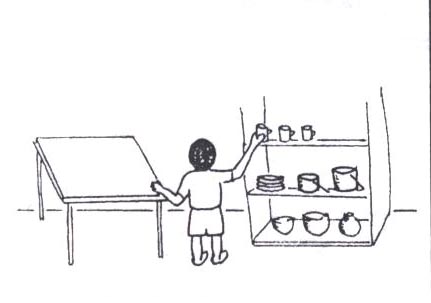
With a child who has difficulty with both vision and hearing, you should always keep household equipment and furniture in the same place. This order should be kept from day to day.This will enable the child to learn where things are and to be able to find for himself things that she wants.In the long term, this will mean that the child can be more independent.
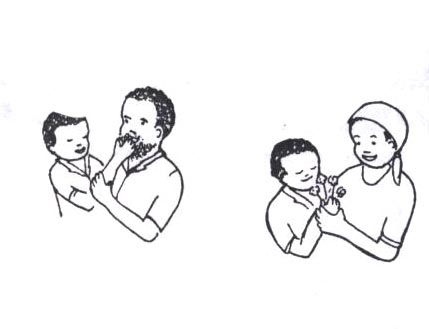
Because of the impairment with vision and hearing, a child who is deaf and blind really need to be encouraged to use her senses of touch, smell and taste in order to learn about her world. we must give her lots of opportunities in this way.
Father : Feel
appa's beard!!
Mother : Oh the
flower smells sooo nice!
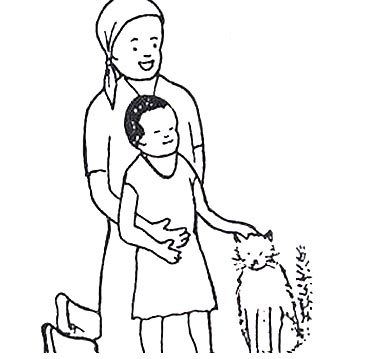
Make physical contact with your child as often as you can - this way she can learn about your moods, movement, breathing and body tension and relaxation. This helps to strengthen the bond between you and your child during every day activities. This bonding is important for developing communication skills.